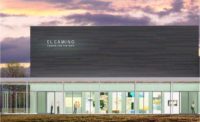A U.S. computer data center located next to the Great Lakes is updating a traditional local method for cooling a building to reduce its energy consumption. Due for completion this June, the $150-million facility near Buffalo, N.Y., can turn an entire building into an air handler, powered by fans of the servers they house.
“We are applying lessons that were learned during the industrial revolution in Buffalo to a modern data center, which is a new industry in Buffalo,” says Scott Noteboom, director, data-center engineering operations at Yahoo Inc., the Sunnyvale, Calif.-based owner.
Like its industrial-revolution forbears, the data center will take advantage of prevailing winds from the nearby lakes to keep its computers cool. Resembling chicken coops, the three 2,800-sq-meter server buildings are rectilinear blocks, with controllable louvers running along both sides. Inside the buildings, servers sit on racks facing the louvers; server fans pull the air through a space in the center of each building, cooling it. The now-heated air then rises into a channel on top of the pitched roof and is expelled from the building through vents.
Auxiliary fans aid cooling as required. “But not anything close to [the amount of auxiliary fans] you would see in larger data centers,” says Terence Deneny, vice president of New York-based Structure Tone Inc., the project’s general contractor. In hot weather, the center will run an evaporative cooling system.
Noteboom says Yahoo conducted a number of studies to improve poor airflow management in a traditionally designed data center. “When you take into consideration all the fans … you end up with 300% more fan horsepower than required,” he says.
Yahoo declines to identify the project’s design firms.
The power-usage effectiveness (PUE) rating—the ratio of total power used by the center to that consumed by its servers—will be 1.08, forecasts Noteboom. That figure beats the industry’s average of 2.0 PUE, reported by the U.S. Environmental Protection Agency.
“It is going to be, by far, Yahoo’s most efficient and arguably the most innovative data center, at least from a cooling perspective,” says Noteboom.
By way of official recognition, the project this January won a $10-million Dept. of Energy grant from a fund dedicated to supporting energy efficiency in the information-technology sector.




Post a comment to this article
Report Abusive Comment